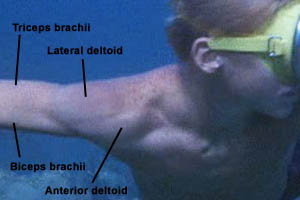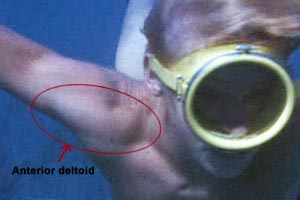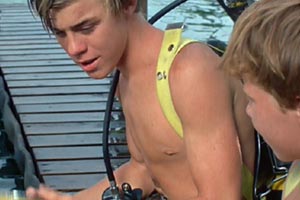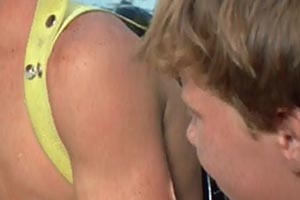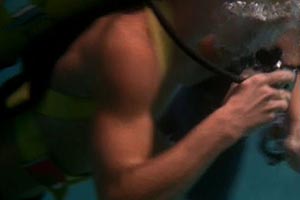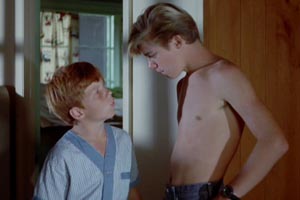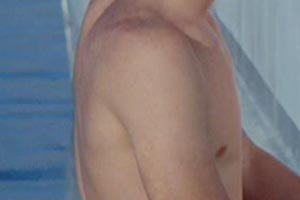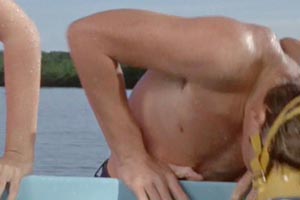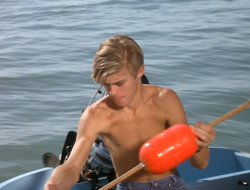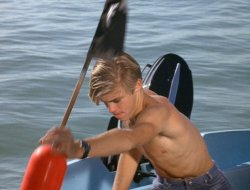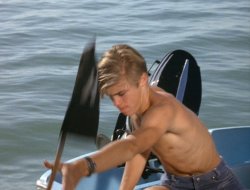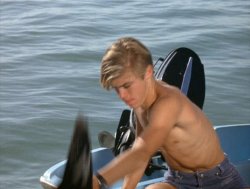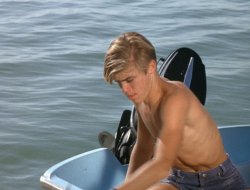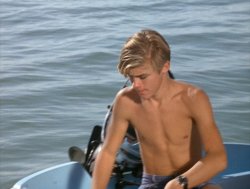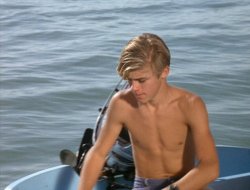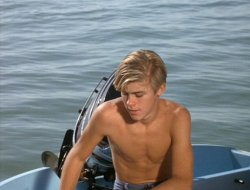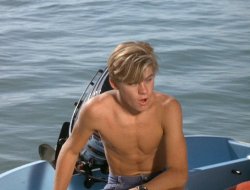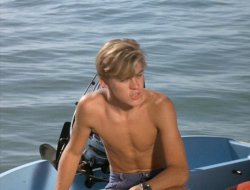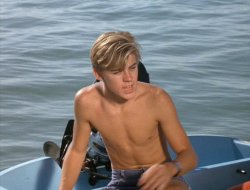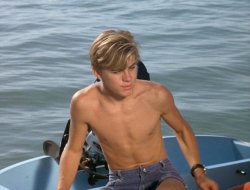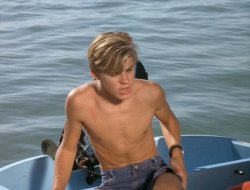 |
|
|
 |
 |
|
 |
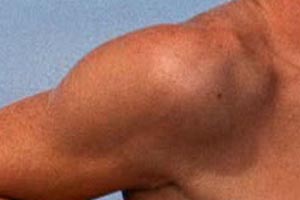 |
 |
|
|
 |
 |
|
|
Luke Halpin As an expert swimmer and diver, Luke Halpin's shoulders are quite powerful. |
| |
Luke Halpin's Shoulders
page 2 | page 3
Luke Halpin's athletic prowess in the water is well-known to his fans. It's what helped him win the role of Sandy Ricks. Luke loves the water just as much as Sandy, and has even called it his second home.
As a result of Luke's years of athletic activity, his body has developed accordingly. His lean build is tailor made to propel him through the water, both above water and below. A brief examination of his body will reveal the dense, hard muscles that serve in this: his arms, legs, and back.
Luke's shoulders are especially critical. As a swimmer, Luke Halpin places heavy demands on his rotator cuff as he swings his arms over his head and into the water over and over during his swims. His shoulder is a key partner in this motion.
The primary shoulder muscle is the deltoid which runs from the upper back to the upper arm. In many people, this muscle tends to be underdeveloped, since it is mainly used for lifting the arm over the head, a motion that not many people do unless they work in a job like stockboy and do a lot of lifting over their heads.
But while Luke's deltoids are not normally seen lifting objects, they are definitely seen as he swims. For just as in lifting, Luke is moving his arms over his head over and over as he swims through the water. Because of the circular motion of his swimming form, Luke's deltoids are given a thorough end-to-end workout.
Luke's shoulders have a characteristic triangular shape due to their high definition and low fat content. This triangular shape is quite impressive and is visible in many of his scenes.
TECHNICAL NOTE: The deltoid muscle actually has three parts: anterior deltoid, lateral deltoid, and posterior deltoid. Luke Halpin's deltoid muscle is so highly developed, that at times you can actually distinguish the three parts in his shoulder. These terms will be used to more accurately discuss the features of Luke's shoulders.
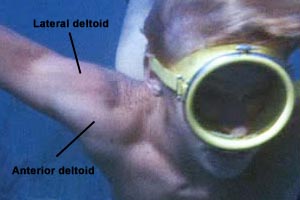 |
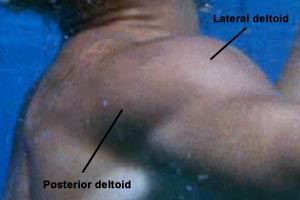 |
| Flipper (1963) |
|
Flipper (1963)
An avid swimmer and diver, Luke Halpin's highly toned physical build was developed at an early age. In this picture from the very first Flipper feature film, we can see clear evidence of the amazing separation and definition in his shoulders (deltoids) and other muscles:
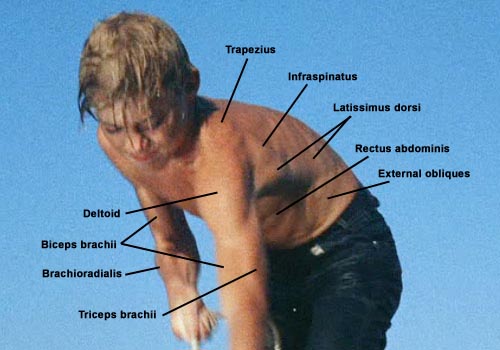 |
| Flipper (1963) |
|
While Luke Halpin was quite young in the first feature film, his shoulders nevertheless were highly defined. Note the characteristic triangle shape in the second picture:
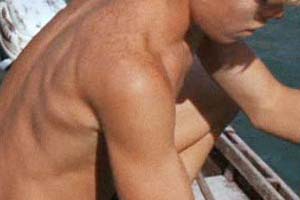 |
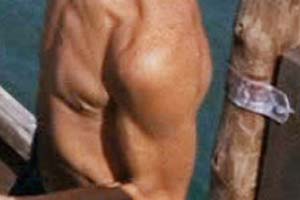 |
| Flipper (1963) |
|
The separation between his shoulder and triceps is very distinct here:
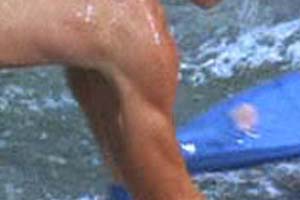 |
| Flipper (1963) |
|
In this picture, we can clearly see the point where the deltoid inserts into the upper arm:
 |
| Flipper (1963) |
|
Note the separation between the flexed bicep and the shoulder in Luke's left arm:
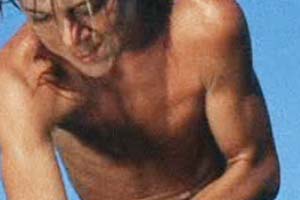 |
| Flipper (1963) |
|
In this unusual photo, Luke's deltoid seems to elongate as he pulls his arm behind him:
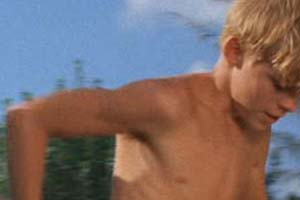 |
| Flipper (1963) |
|
In these impressive underwater shots, the anterior deltoid and lateral deltoid are clearly separated. Note the large size of Luke's anterior deltoid:
The posterior deltoid is a part of the shoulder that is used to move the arm behind the back. It is often underdeveloped in non-athletes. But in Luke Halpin, the posterior deltoid (and also the lateral deltoid) bulges out, as seen in this underwater shot:
 |
| Flipper (1963) |
|
When tightly flexed, Luke Halpin's shoulder swells and hardens into a powerful rock-like mass. In this picture, Luke's fully flexed deltoid is sharply separated from the rest of his arm:
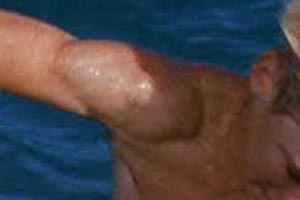 |
| Flipper (1963) |
|
Luke Halpin's shoulder is positively gigantic in this relaxed shot:
 |
| Flipper (1963) |
|
In this powerful back shot, Luke's left shoulder bulges with rock-like hardness:
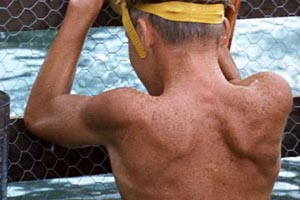 |
| Flipper (1963) |
|
Flipper's New Adventure (1964)
Moving on to 1964 and Flipper's New Adventure. In this first sample, we see a remarkable trio of muscles, the biceps and triceps crowned with the deltoid, highly flexed and separated:
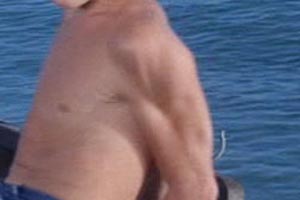 |
| Flipper's New Adventure (1964) |
|
Luke's shoulder displays a muscular rounded contour as he raises his left arm:
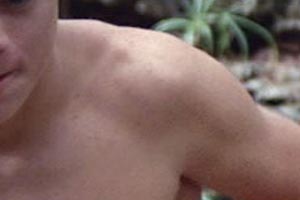 |
| Flipper's New Adventure (1964) |
|
As Luke leans on his arm, his deltoid flexes with a tight bulge:
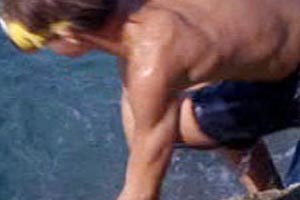 |
| Flipper's New Adventure (1964) |
|
Luke Halpin's upper arm and shoulder display their impressive development in this underwater shot:
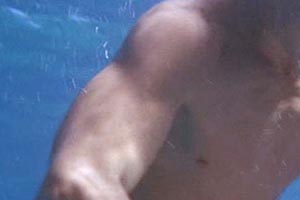 |
| Flipper's New Adventure (1964) |
|
Here is another example of the separation between the lateral and posterior deltoids in Luke's shoulder:
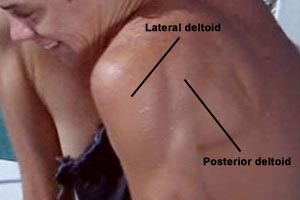 |
| Flipper's New Adventure (1964) |
|
Flipper, Season 1
In Ep 2 "The Red Hot Car" in Season 1, we get our first view of Luke Halpin's more mature shoulder development:
Luke Halpin's shoulder can appear like a rock-hard bulge that erupts out of his arm when flexed:
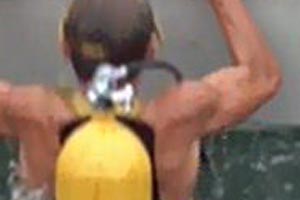 |
| The Red Hot Car (1964) |
|
or as a relaxed, tapered mass of muscle that blends with the lean, equally toned arm below it:
 |
| The Red Hot Car (1964) |
|
Ep 3, S.O.S. Dolphin, features this fascinating closeup of Luke Halpin's right shoulder. Note the bulk of the deltoid as well as its deeply furrowed separation from the biceps:
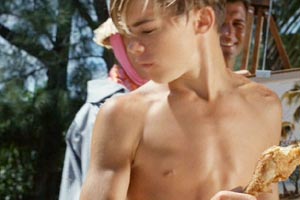 |
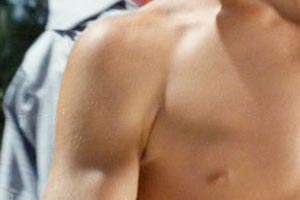 |
| S.O.S. Dolphin (1964) |
|
Luke Halpin's deltoid is distinguished for its highly defined separation:
 |
| S.O.S. Dolphin (1964) |
|
Not only is Luke's entire deltoid muscle highly separated from surrounding muscles, but there is also separation between the muscle fibers inside the deltoid itself. This characteristic of internal separation is only seen in highly advanced muscles. In this picture from Ep 10, My Brother Flipper, note the individual striations in the shoulder muscle:
 |
| My Brother Flipper (1964) |
|
In this scene from Ep 11, Second Time Around, we have a unique opportunity to compare the level of development of Luke's right shoulder from three angles: front, side, and back. A close examination reveals that Luke's deltoid is remarkably well developed from every possible angle.
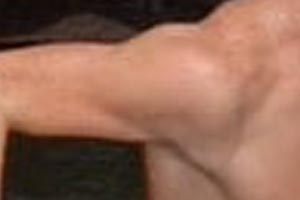 |
 |
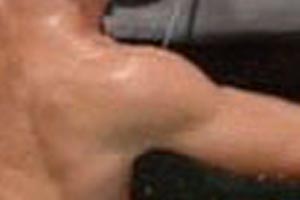 |
| Second Time Around (1964) - Front |
Side |
Back |
|
Luke Halpin's back possesses incredible muscularity. But will his shoulder muscles be able to match his formidable back muscles? Indeed, they do, as shown in this eye-opening picture:
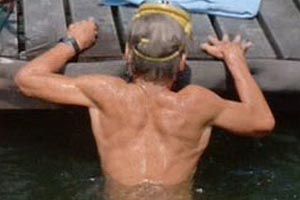 |
| Second Time Around (1964) |
|
For sheer power, it is difficult not to be impressed by Luke's shoulders in this scene from Ep 13, The Lady and the Dophin (part 2):
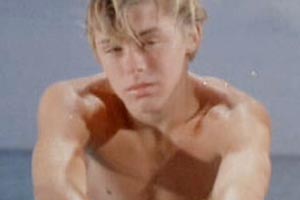 |
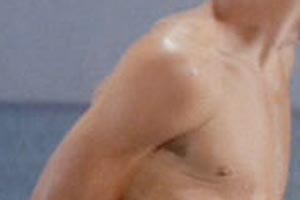 |
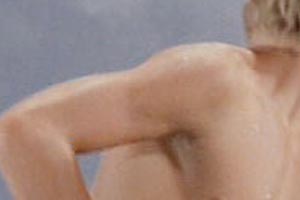 |
| The Lady and the Dolphin, (Part 2) (1964) |
|
From Ep 18, The Day of the Shark:
compare the relaxed shoulders of Luke to the sharp definition of his flexed shoulder as he lifts a heavy pair of oxygent tanks:
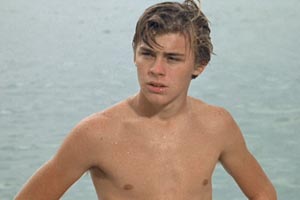 |
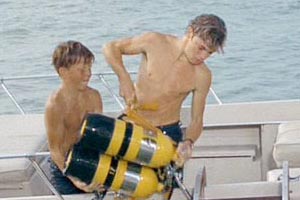 |
| The Day of the Shark (1965) |
|
Ep 19, Love and Sandy, features a similar comparison. In the scene with his brother, Luke's bare upper body dominates the scene even in its relaxed state. Later, he is having a conversation with Bonnie before a dive. In the diving scene where Luke pushes himself up into a boat, cameras close in on Luke's tightened shoulder:
Ep 20, Money To Blow, features a scene which illustrates the intense separation between Luke's deltoid and his other muscles:
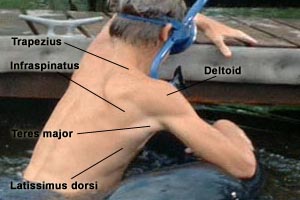 |
| Money To Blow (1965) |
|
When Luke raises his arm, his deltoid takes on a pronounced elongated shape:
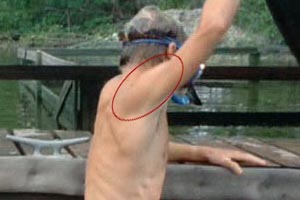 |
| Money To Blow (1965) |
|
The following scene from Ep 20, Money To Blow, is an outstanding illustration of Luke Halpin's shoulder development in Season 1 and is presented here in its entirety:
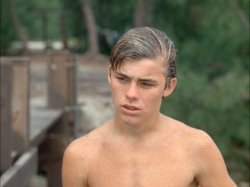 |
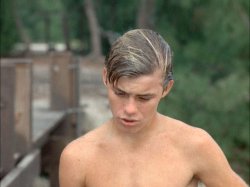 |
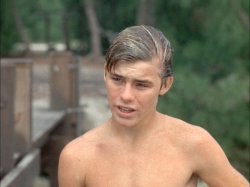 |
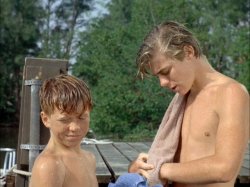 |
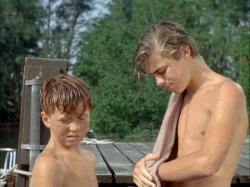 |
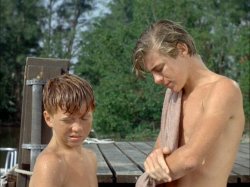 |
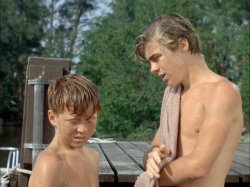 |
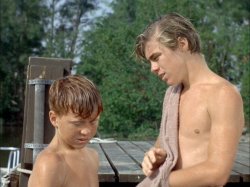 |
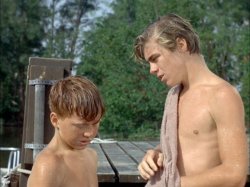 |
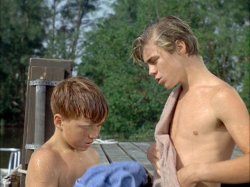 |
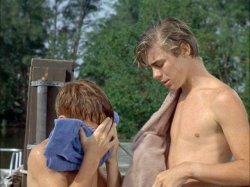 |
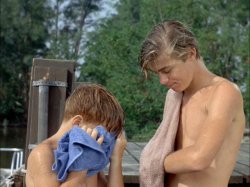 |
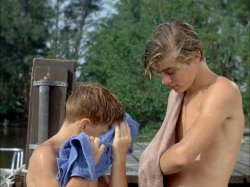 |
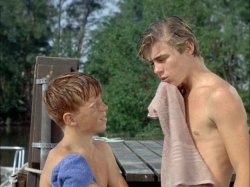 |
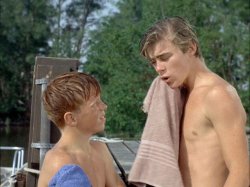 |
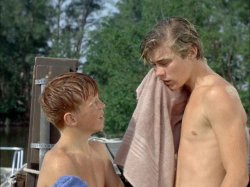 |
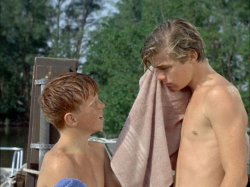 |
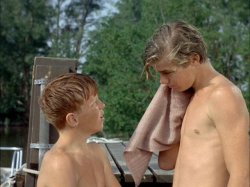 |
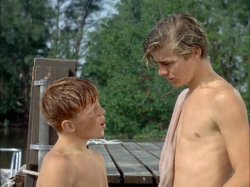 |
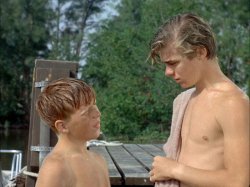 |
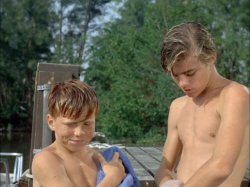 |
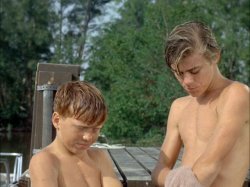 |
 |
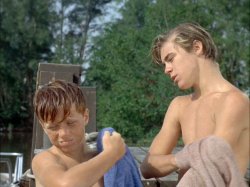 |
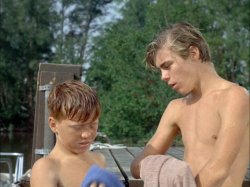 |
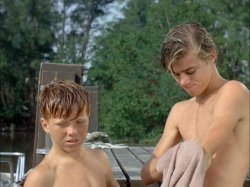 |
|
| Money To Blow, (Part 2) (1964) |
|
The following scene from Ep 21, Flipper's Treasure, features some of the most beautiful portraits of Luke Halpin. Examine these images and note how the shape and tone of his shoulders combine with the rest of his muscles to form a body of astonishing beauty. Luke's physical image is clearly the sum of its parts.
| Flipper's Treasure, (1965) |
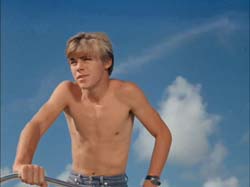 |
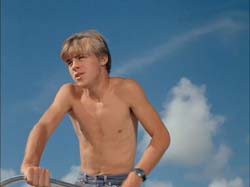 |
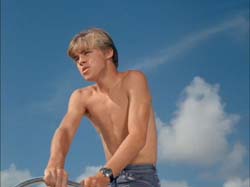 |
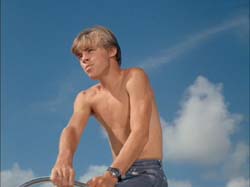 |
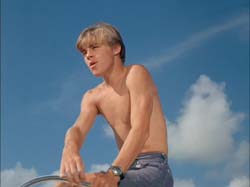 |
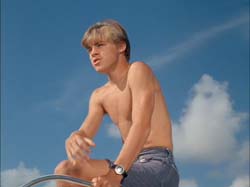 |
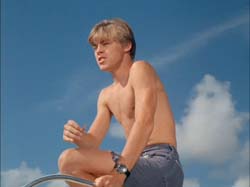 |
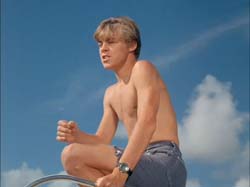 |
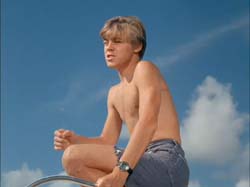 |
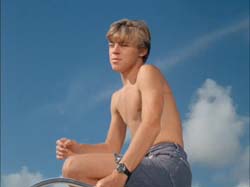 |
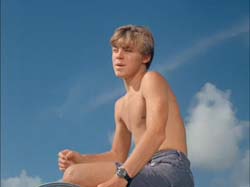 |
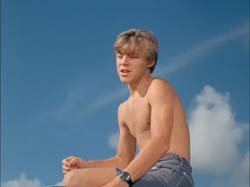 |
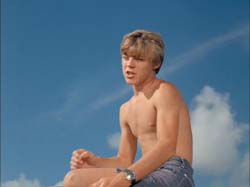 |
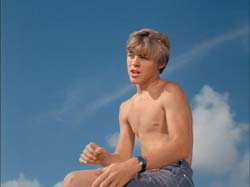 |
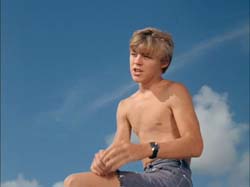 |
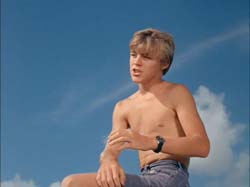 |
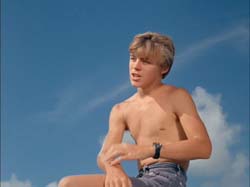 |
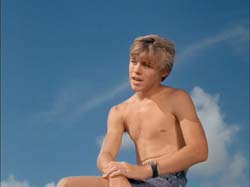 |
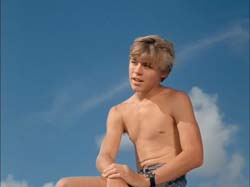 |
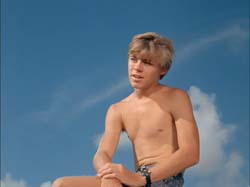 |
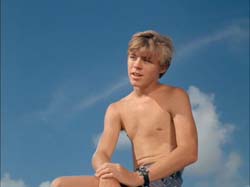 |
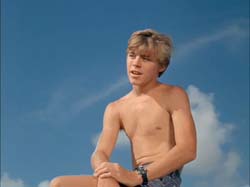 |
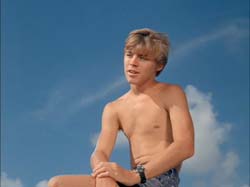 |
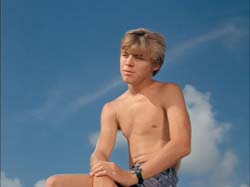 |
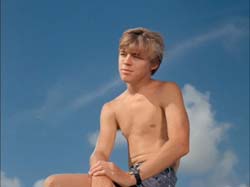 |
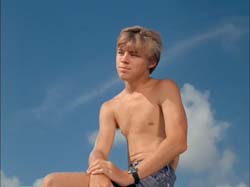 |
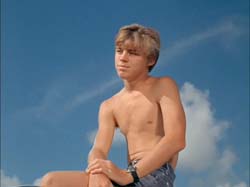 |
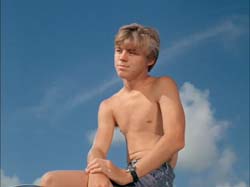 |
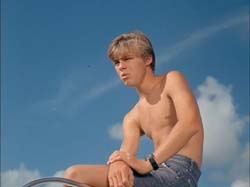 |
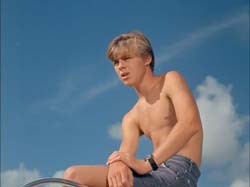 |
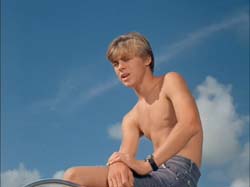 |
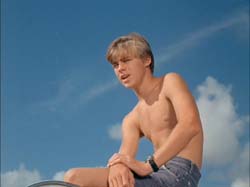 |
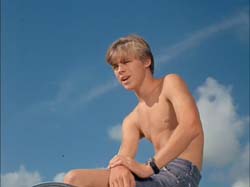 |
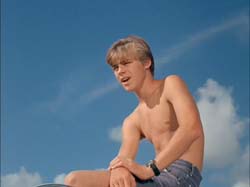 |
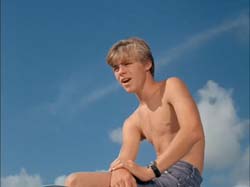 |
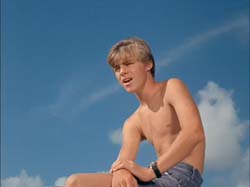 |
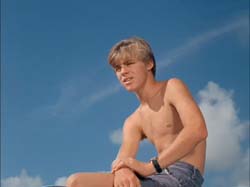 |
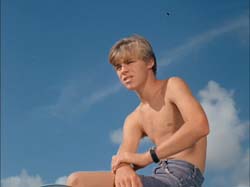 |
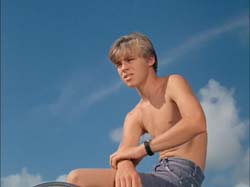 |
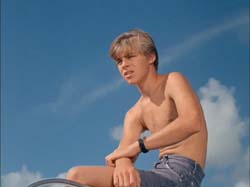 |
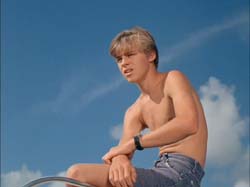 |
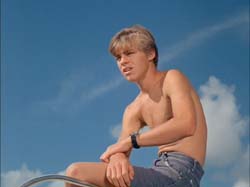 |
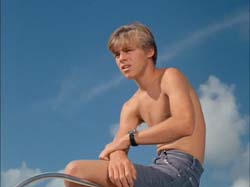 |
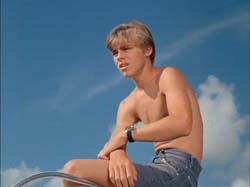 |
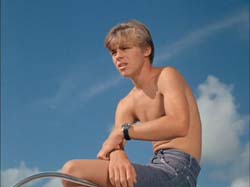 |
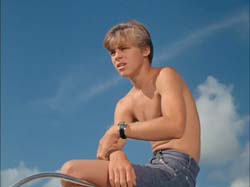 |
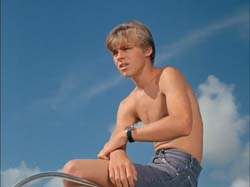 |
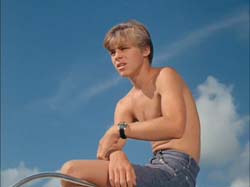 |
|
Ep 22, The White Dolphin, tells the story of a uniquely beautiful dolphin found by Flipper. But the episode also provides an equally fascinating view of Luke's shoulders:
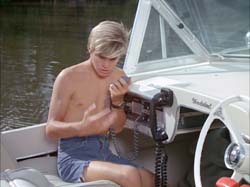 |
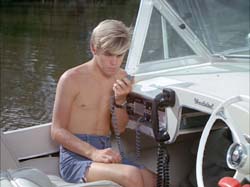 |
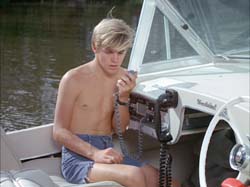 |
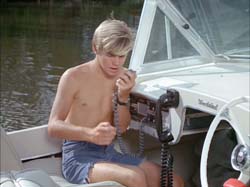 |
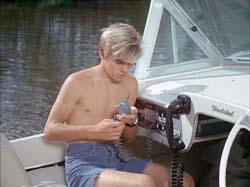 |
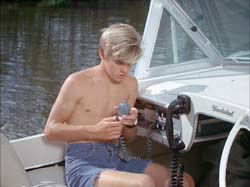 |
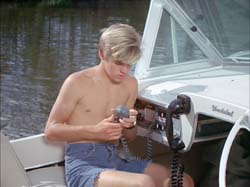 |
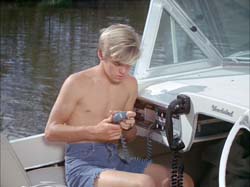 |
| The White Dolphin, (1965) |
|
Ep 23, Teamwork, presents this illustration of the amazing definition in Luke's shoulder and other upper body muscles:
Ep 29, Call of the Dolphin, contains this scene where Sandy is playing football catch with Bud. Hands on hips in one of his common poses, Luke Halpin presents his bare upper body in an imposing stance.
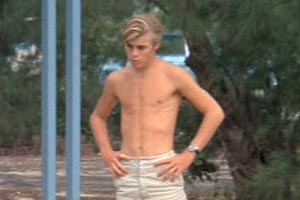 |
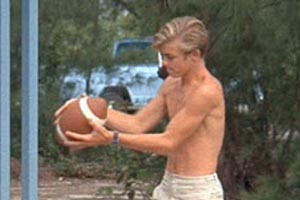 |
| Call of the Dolphin, (1965) |
|
Please continue to page 2. |










